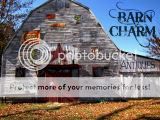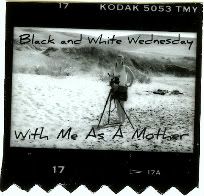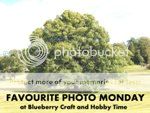
Another scene from Jamestown. If you look to the right of that building, in the front right corner, you will see what looks like they are making a small fence, but actually they are making a wall. That is called "waddle" and they weave the wood in and out of the slats.
Linking with
Friday Fences
Here's some interesting info regarding Jamestown/Colonial Architecture. It's quite lengthy so grab a cold drink and a snack!
English Colonial Architecture
The settlers at Jamestown built the exact type of houses that had been common in England since the Middle Ages. They were framed with heavy, dressed timbers, constructed by experienced carpenters, who were brought along specifically for that purpose. The interstices were filled with waddle and daub – a mixture of clay and straw. The earliest houses had no foundations other than a heavy “mud sill” beam. The half timbers houses were inadequate for the cold, windy winters of the Chesapeake Bay region. As soon as the waddle & daub dried, cracks formed at the joints with the timbers and allowed the wind to blow through. The earliest fireplaces were evidently built out of clay and logs, because there were few fieldstones on Jamestown Island. The original houses at Jamestown had dirt floors and thatched roofs.
As Virginia’s colonists moved farther inland they are able to obtain fieldstones for constructing crude foundations and chimneys, mortared with clay. There were very, very few brick houses in Virginia until the 1700s. Bacon’s Castle, included in the attached slide show, was one of those few brick houses. The builders found it less expensive to import the brick makers and kilns than to import the bricks! Lime plaster and mortar were only used by the wealthiest of homeowners. For much of the 17th century, all hydrated lime for building construction was imported from England. The reason was that there is very little exposed limestone in Virginia’s narrow coastal plain and the Piedmont contains only igneous and metamorphic rocks.
Once explorers reached beyond the Blue Ridge Mountains, domestic lime did become available for construction. The Shenandoah Valley was underlain by dolomite limestone that was an excellent building material and source for lime. The crushed limestone rocks were stacked along with dried timbers into large cones. These cones were set on fire and the fires were allowed to burn red hot for several days, until most of the limestone was a grayish-white powder – a mixture of hydrated lime and ash. Masons dug pits near a planned construction site and filled them with slurry containing the crude lime, sand, a yellow-colored clay and water. The pits were covered. The masons would return in about 3-4 months to use the “slaked lime” for mortar. The word slime comes from “slaked lime.”
In 1621, the settlers of Plymouth Plantation forgot to bring along experienced carpenters! Each family was expected to build its own house. During the first winter, most of them were forced to live in the Mayflower. They also constructed half timber houses, in-filled with waddle & daub, but added crude clapboards (wood siding) to partially block the winds. Most of the original houses were poorly constructed, one room hovels, which frequently burned to the ground.
About a decade after the founding of Plymouth, large numbers of Puritan refugees began arriving in Massachusetts. The tradition of houses framed with heavy timbers continued, but waddle & daub walls faded away. They were replaced with tightly nailed clapboards on the exterior and vertical boards on the interior. New England continued the tradition of primarily building wood houses into the late 1800s.
Throughout the Colonial Period, brick houses were rare in the American colonies, except near seaports. Cargo ships used bricks and paving stones for ballast. The cost of transporting bricks and stones away from port cities, (and later, domestic brick manufacturers) made them too expensive for most home builders. Stone masonry houses became more common in the early 1700s, when domestic construction lime was more plentiful. The stones were usually either gathered or quarried very close to the house site.
Log construction was introduced by Swedish and Finnish colonists in the mid-17th century, but really did not become commonplace until the 1700s; and then, only in the western frontier. They were primarily built by settlers of modest means in regions distant from saw mills. Many of the log houses of the late 1700s were two story structures that mimicked the proportions of Georgian Style houses. (See the attached slide show.)
The only location, where stuccoed English Colonial houses can be found in number is along the coast of South Carolina. Charleston’s stucco tradition probably developed from the immigration of Caribbean planters and French Huguenots into the colony. Charleston also had the most cultural contacts with Spanish colonists in Florida and the Caribbean islands of any of the colonies.





























